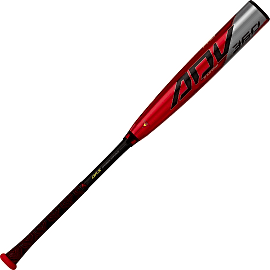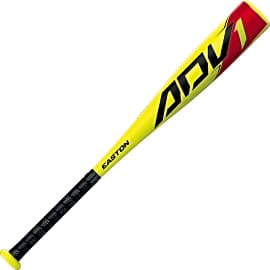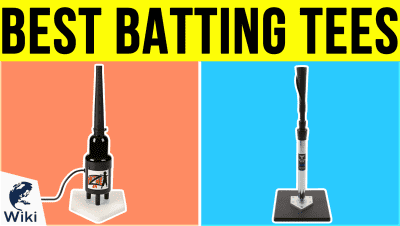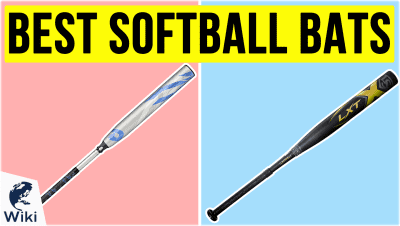The 9 Best Baseball Bats

This wiki has been updated 38 times since it was first published in April of 2015. The great American pastime wouldn't be where it is today if it weren't for a few innovators in design. A long time ago, baseball players all made their own bats, but nowadays, thankfully, we have professionals tuning lumber, alloys, and composite materials to perform like never before. We've ranked the best options on the market by their responsiveness, weight distribution, and durability. When users buy our independently chosen editorial recommendations, we may earn commissions to help fund the Wiki.
Editor's Notes
August 06, 2021:
For this round of updates, we removed a Louisville Slugger line that was merged with another non-BBCOR release. We also were fortunate enough to find direct updates to our remaining top four, one of which should satisfy almost any ballplayer. The Easton Maxum Ultra remains on top thanks to its pro-grade feel while the DeMarini Goods and especially the Rawlings Velo are notably less expensive but perform nearly as well.
July 07, 2020:
Since most major bat manufacturers update their selections on a yearly basis, we wanted to make sure that our list was as current as possible, but also that the bats on it were legal for play in the leagues for which they're intended. We have the Louisville Slugger Meta on our list, for example, the 33-inch version of which was outlawed by the NCAA. Its other lengths are still legal, however, and might be worth a serious look if the difference of one inch crossed the line for the organization in testing. We also included the Easton ADV 360, which may raise some eyebrows since an Easton product with the same name was banned for its colorway. The specific model we included is fine, however.
We tried to have some diversity here, as well, with BBCOR models for high school and college players making up the majority of our list. The rest features models for Little League, like the Marucci CAT MSBC10USA, and even an option for tee ball players in the Easton AVD Tee Ball, so they can have something lightweight and still powerful, and possibly bolster their hitting confidence.
It's important to pay attention to construction principals with these models, as you'll see one-, two-, and three-piece models, each with its parts measured, weighted, and connected to create the best hit they can. For hitters themselves, this is going to come down to swing style and personal preference, but bats with heavier ends are often better suited to power hitters, while lighter bats with more even weight distributions can add speed and control to your swing.
Special Honors
Marucci Custom Pro If you're after a customized wood model, there are few companies who offer more comprehensive options than these guys. You can select your base bat by barrel type, feel, and whether you prefer ash or maple, then specify things like colorways, finishes, grips, and more. And, of course, it can be engraved to say just about anything you want it to, making these equally good for active players as they are as gifts for lovers of the game. maruccisports.com
Tons Of Force
Controlling for the differences among batters, you can place the bat in the hands of a machine.
You can look back on every great hit you've ever had and you probably couldn't say for sure what the experience was like. It's a crack (or ping in the aluminum world) in the ears and a gripping vibration in the hands that you feel in your spine the way you do when your hand touches something hot and instinctively recoils faster than the signals could reach your brain. And it's absolute magic.
That magic can be reduced to science, of course, if you're willing to put in the leg work, and any scientific experiment will get exponentially more difficult to perform as the number of variables increases. In baseball, you've got to consider the weight of the bat, its materials, the angle and momentum of the swing, the bone structure and muscle density of the swinger, the spot on the bat where the ball makes contact, the speed and spin of the ball, the placement of the ball's stitches at the moment of impact, and a heck of a lot more.
Controlling for the differences among batters, you can place the bat in the hands of a machine. This will also keep the angle and momentum of the swing constant. Suddenly, the math gets a little easier, but I was an English major, so I let Daniel Russell, Ph.D. and professor in the Graduate Department in Acoustics and Penn State University, do the math for me.
According to his research, the force with which a bat collides with a ball runs on a kind of bell curve for the .7 milliseconds of contact. The average force placed on the ball is just over two tons, with a peak in the curve above four tons of force. It requires that much energy to take a baseball traveling in one direction at 90 mph and set it off in the opposite direction at 110 mph.
The weights and materials of the bats on our list vary significantly from the relatively heavy to the super-light, and from aluminum, to ash or bamboo, and even modern composites. The result is a field as variegated as the hitters themselves.
Wood Vs. Metal
The first, and arguably the most important thing to consider when evaluating the bats on our list is the difference between a wood bat and a metal bat. Since their introduction in the 1970s, aluminum bats have caused a tremendous amount of controversy, so much so that the NCAA actually places very specific limits on their performance as much for the safety of the player as for the political preservation of their relationships with wood bat manufacturers.
To clarify, an aluminum bat is like a cashier who's terrible at math.
Even with these limitations most aluminum bats will outperform most wood bats, with the noted exception of comparative sweet spots. The reason for this is something called the trampoline effect. A wood bat is solid, so when a ball makes contact with it, that ball compresses to almost half of its original diameter, losing the majority of its energy to the friction of this compression. The energy of the swinging bat makes up for this loss, and if hit properly in the right spot on the bat, will actually create more energy in the ball than what was initially present.
Aluminum and other metal bats, however, are hollow, so they absorb a lot of that ball's initial energy, reducing the ball's compression and allowing it to keep more of its own initial energy as well. Then, not only does the swinging bat replace that lost energy, but as its hollow barrel reshapes itself, it transmits the energy it initially absorbed from the ball back into the ball.
To clarify, an aluminum bat is like a cashier who's terrible at math. You (the ball) go to exchange a bill for four quarters, but you only have a fiver (initial compression and loss of energy), the cashier takes your fiver (beginning of the trampoline effect), and instead of giving four quarters and four singles, she gives you five quarters and five singles (initial energy returned plus energy from the batter).
Very talented hitters can get about the same results from the sweet spots on a wood bat as they can from the sweet spot on an aluminum bat, but that spot on an aluminum bat is bigger, and the trampoline effect takes place no matter where on the bat you hit the ball. That means that a hitter with an aluminum bat can send even poorly hit balls farther and faster than he or she could with a wooden bat.
The big problem with aluminum bats is that they don't use them in the majors, and if you want to start training in a way that'll teach you or your youngster how to hit like a pro, you'd want to hold that experience to as strict a constant as possible.
Whittled Down To The Simplest Form
In the northeastern corners of the Unites States, in the late 18th and early 19th centuries, men gathered to play a little game in which one man threw a ball in the direction of another, and that other man tried to hit it with a stick. That little pastime grew into the world-spanning organization we know today as Major League Baseball.
The players in those early days all used their own equipment, since no such infrastructure for its manufacture existed.
The players in those early days all used their own equipment, since no such infrastructure for its manufacture existed. Many of them whittled bats out of spare wood, trying out different wood types, different shapes, sizes, and weights as suited their style.
Even by the time the game had become organized into a semi-professional league, players still relied on homemade gear. At a certain point, however, the league put forth a standardization for the baseball bat that resounds to this day, mandating that the bats be no longer than 42 inches and no thicker that 2.61 inches in diameter at their thickest point.
Since then, the shape of the bat has become more or less standardized, but innovators keep looking for new ways to improve performance through weight distribution, material combinations, and more.














